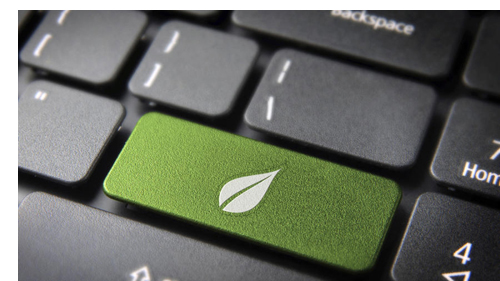Environmentally Friendly Printing
 Is Printing Bad for the Environment?
Is Printing Bad for the Environment?
It depends on the circumstances. Many traditional printing companies use chlorine-based bleaches for certain types of printing. Disposal of these papers can release toxic chemicals into the water, soil, and air. In addition, many high-volume printing companies use technology that emits potentially dangerous amounts of ozone.
The good news is that more and more printing companies are introducing sustainable, “green” printing processes.
What is Green Printing?
“Green” printing is the practice of using renewable energy resources, reducing the use of energy and greenhouse emissions, and using recycled materials. Today, recycled printing paper is both more accessible and affordable than ever before, and using renewable energy allows for the production of carbon-neutral eco-friendly paper.
One of the newest green printing techniques is the use of tree-free paper. This unique paper alternative derives from vegetable products such as bamboo, jute, wheat, straw, or agricultural waste.
More and more companies have implemented digital printing presses that use less power, require fewer chemicals, and use biodegradable toner.
It’s not just the printing companies that are working towards eco-friendly solutions. In France, a design company routinely delivers branding designs to its clients that purposely use less ink. They’ve even taken it upon themselves to design eco-friendly brands for major corporations. How often do you think the MacDonald’s logo prints daily? What if each iconic “M” logo contained only ½ as much ink as they usually do? It would make a big difference.
But we’re a small company. What can we do?
Every company can implement eco-friendly solutions, regardless of their size or how much they print.
One thing you can start doing right now is reading your documents online and using communal sharing platforms like Google Docs instead of printing everything. If you have to print, look for 100% recycled paper or paper certified by the Sustainable Forestry Initiative.

Recycle your printer ink cartridges. Most manufacturers offer recycling programs. Many managed service companies do as well. (Ours happens to be right here.)
Turn off unused devices. When the last person leaves the office daily, they turn off the lights. But what about the office printer? Chances are it’s on 24/7, even if it’s left in sleep mode. Get in the habit of turning your office technologies off each night. When you buy new office technology, look for the Energy Star label, which guarantees a third-party certification that your computer will use 25% less energy than conventional models.
Environmentally friendly printing is possible at any scale. The big companies are doing it, and you should be, too.
Return to the Tech Trends Newsletter

